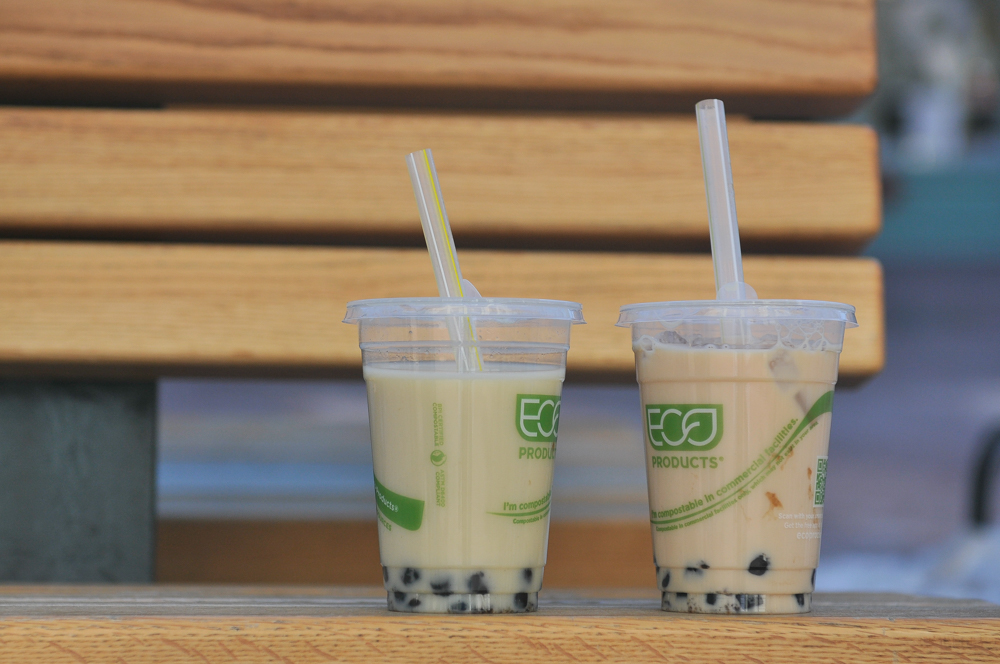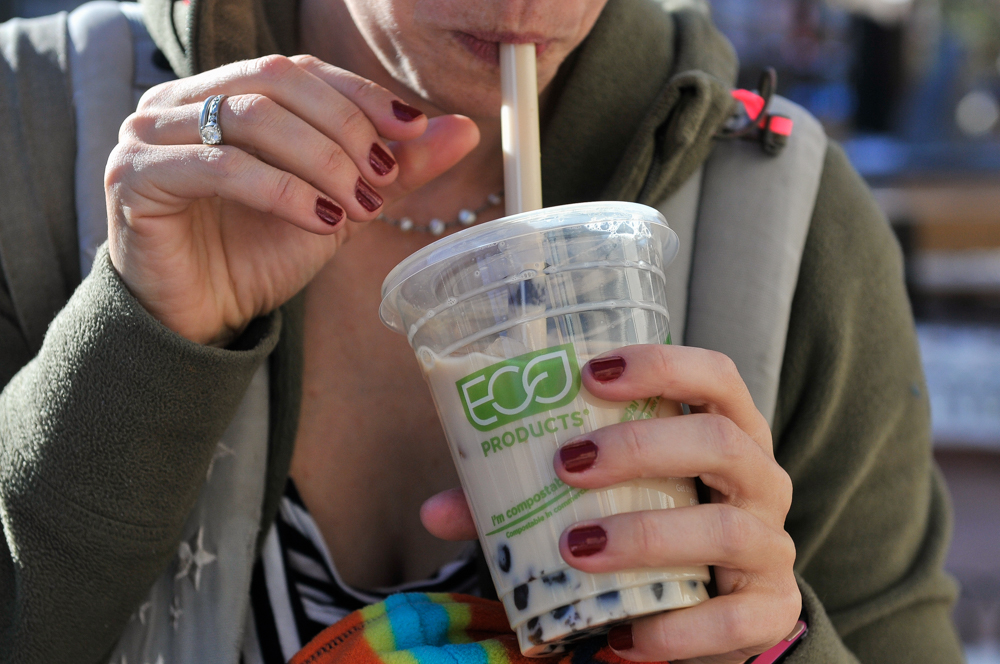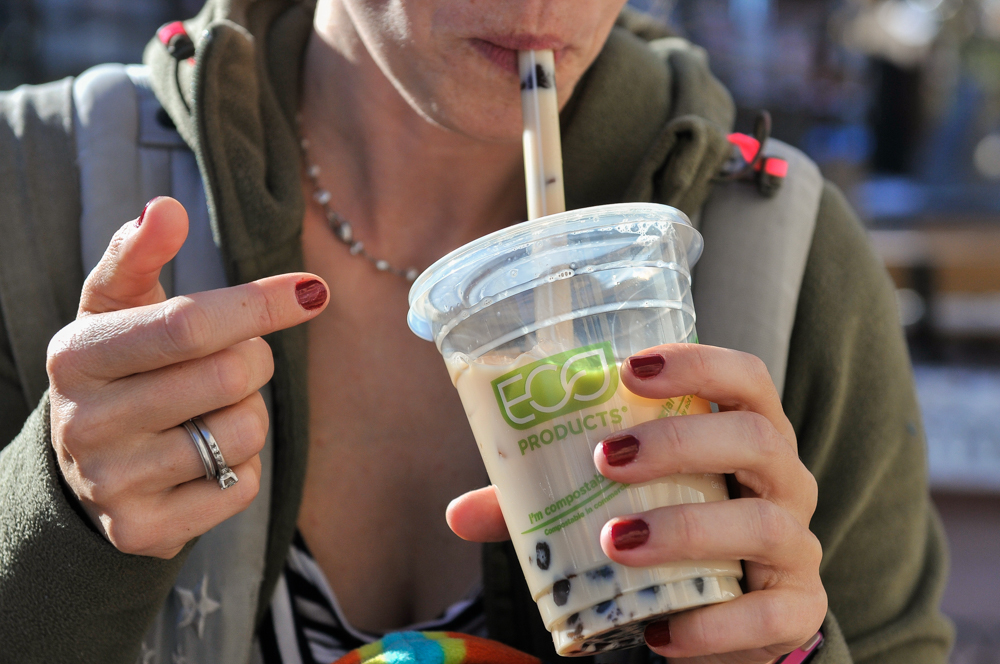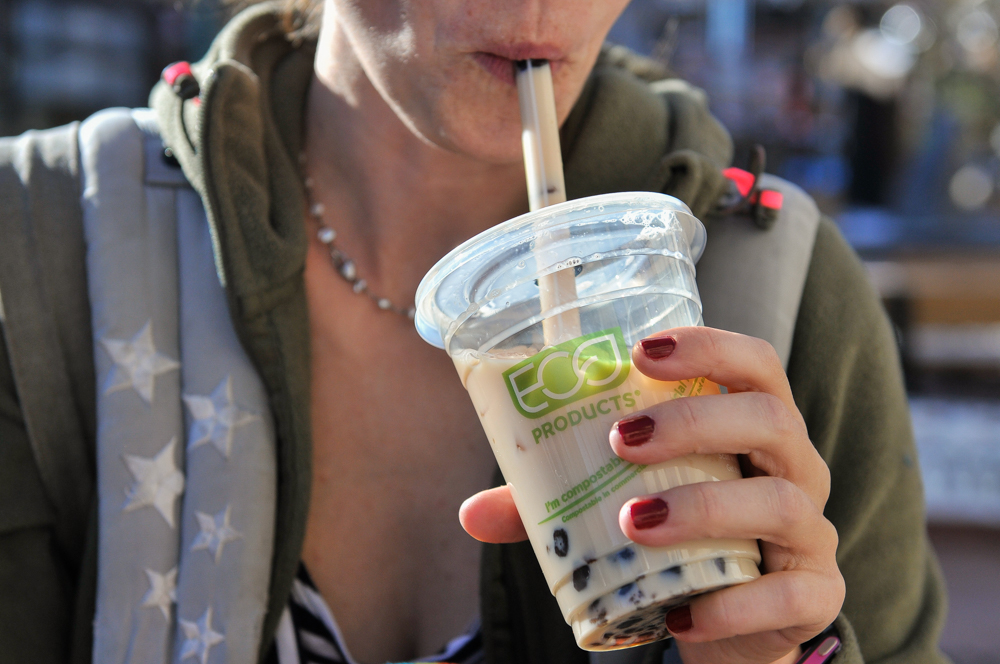Tea is our ingredient of the season this winter, and we are a big fan of using it in sweet treats, like these ice cream sandwiches, this milkshake, and these matcha-frosted cupcakes!
Bubble, or boba-milk, tea was always one of my favorite treats when I’d pass through Chinatown while going to school in Philly. Although, admittedly, in those days I would usually substitute coffee for the tea, but a theme’s a theme, so we’re talking tea today.
Have you had a cup of bubble tea yet? What do you think? Have you seen it and just wondered what the heck was going on with those gelatinous black balls and the extra-large straws?
The black balls are made from tapioca. If you’ve had tapioca pudding then you know what to expect in terms of texture. They are slimy to the touch with a chewy texture. It seems like an odd addition to tea, but adding them to a sweetened, milky tea turns the drink into a fun dessert. With each sip, you’ll suck a few tapioca balls into your mouth and chew them with the tea… and after a couple of sips, you’ll find the whole thing oddly addictive.
As I said, I had my first taste of bubble tea in Philly in 1999 or so, and I’ve always been curious about when and how this drink developed. It took until now for me to finally look it up. According to Wikipedia, it seems that the drink was developed in the late 1980s when tapioca pudding was poured into tea by a drink developer at a popular teahouse chain in Taiwan. That drink was shared among employees of the chain, and was so well received that it was added to the menu, and the rest is history… or is it? Of course, there’s an alternate story of an individual at another teahouse creating the tea using white tapioca pearls before eventually swapping those for the black variety.
The tea spread throughout Southeast Asia throughout the 1990s, eventually making its way to the US. At first bubble tea was originally only available in areas with large Asian populations, like Philly’s Chinatown, but as its popularity has caught on with the larger population, some bubble tea chains have opened in other commercial areas.
The last time Sarah was in town, we stopped into Ku Cha for a couple of cups. I always get the traditional black tea, while Sarah went for a green on this visit. Originally bubble tea was made with black tea. Since we were buying our bubble tea at a traditional tea house, our options were limited to the tea varieties that they were brewing, but if you’re picking up a cup from a bubble tea stand, then it’s possible to order it in a wide WIDE variety of fruit and non-fruit flavors (think anything under the sun from honeydew to watermelon to sesame to lavender). These flavors may be added in the form of syrups or powders. In addition to the different flavorings, some shops offer flavored jellies as an alternative to the tapioca balls.
A word about the name – I always assumed that the name was referring to the tapioca balls as the bubbles, but apparently not. The “bubble” in the name refers to the foam created by shaking the tea before serving it. Boba is the name for the tapioca balls. Semantics. I like to refer to it as frog-egg tea.
If you’re big fans, like we are, then you may be excited to know that you can buy the large, black tapioca balls in many Asian grocery stores and make your own bubble tea at home. My party-bucket-list (I’m sure you have one too!) includes having a big bubble tea party one day. Wanna come? What’s your favorite flavor?




